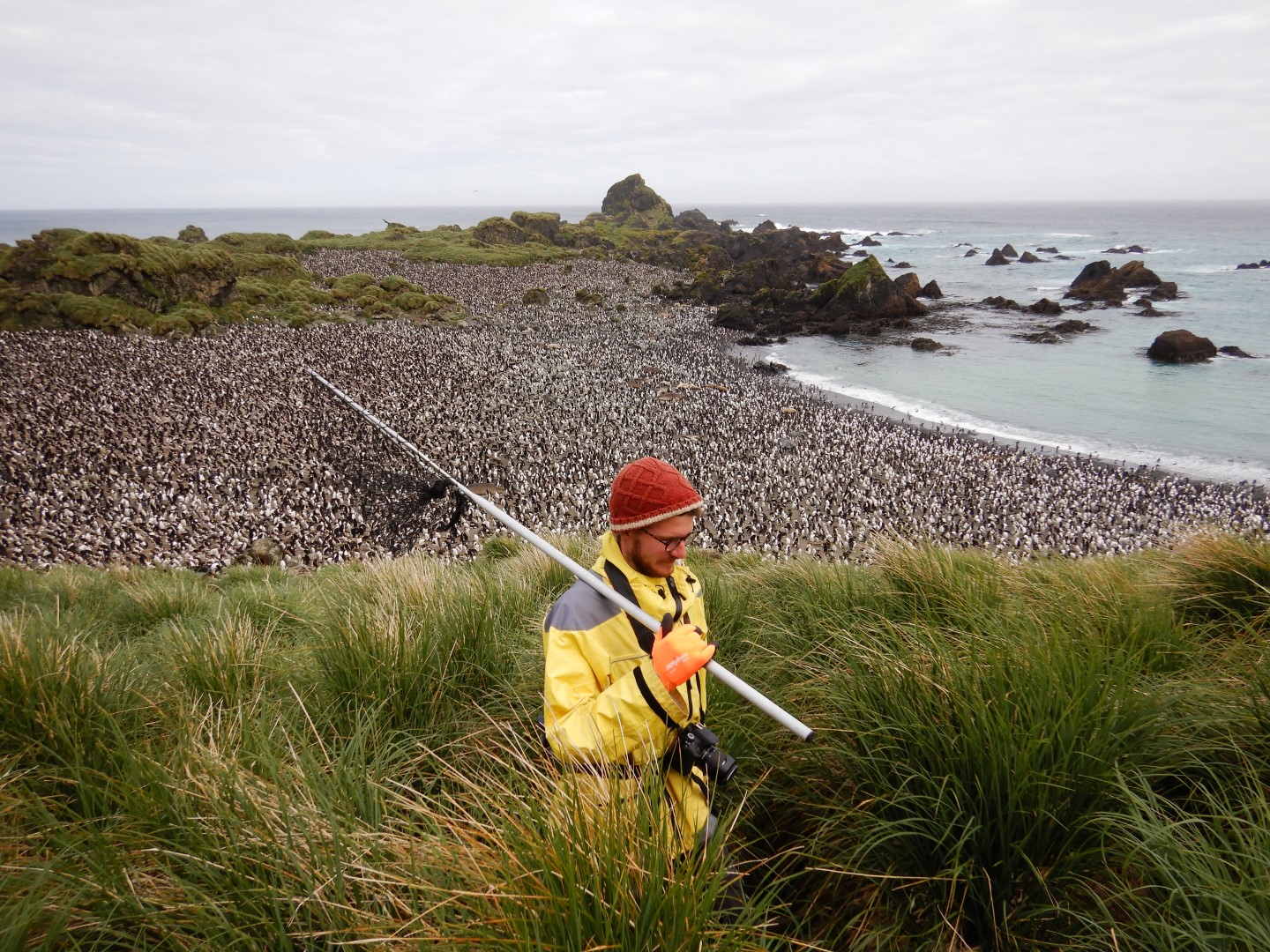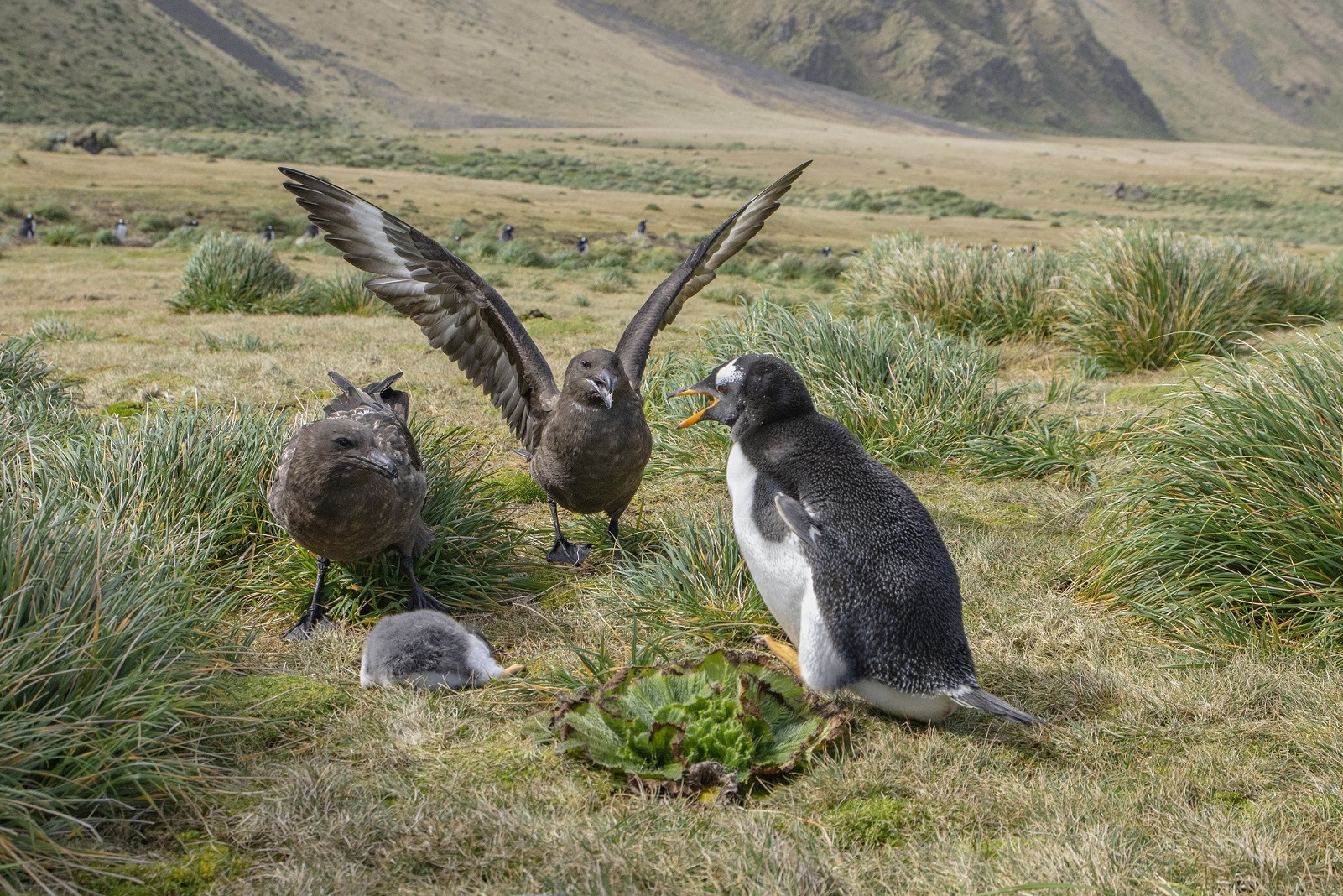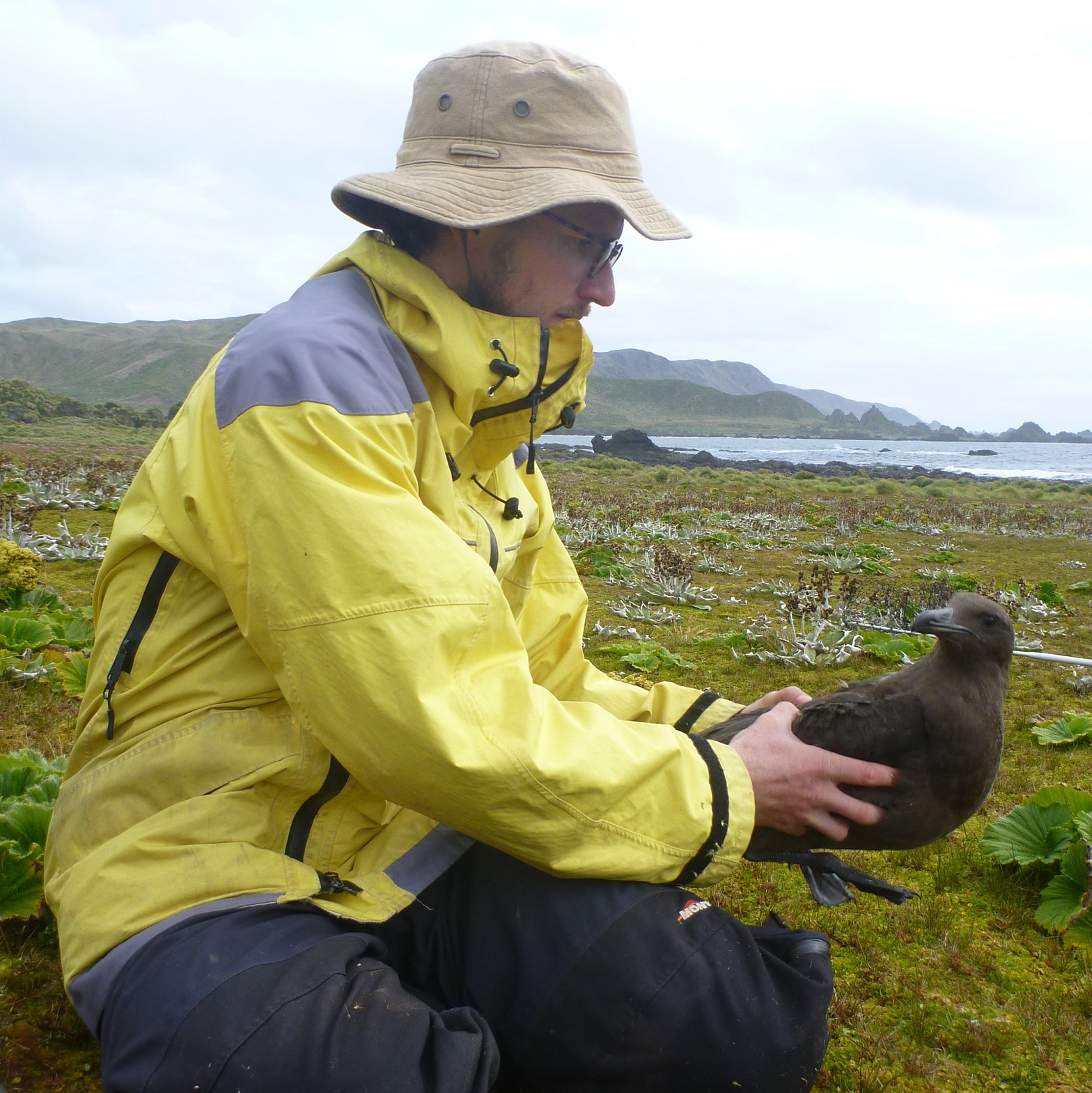
When invasive mammals were successfully eradicated on remote sub-Antarctic Macquarie Island a decade ago, it changed the island’s ecosystem in different ways.
Invasive rabbits, black rats and house mice had impacted the island’s native seabirds and vegetation for over a century. This changed in 2011, when the Tasmanian Government and the Australian Antarctic Division conducted the largest ever multi-species eradication program.
In a big win for conservation, all invasive mammals were removed from the island using a combination of baiting, hunting and virus release.
A new IMAS PhD study published in the Journal of Applied Ecology has also revealed that removing pest species has broader implications, especially for native species that have adapted to prey on them.
Lead author and IMAS PhD Candidate, Toby Travers, said native top-order predators play an important role in structuring prey populations, with flow-on effects for the broader ecosystem.
“Our study set out to understand the long-term implications of prey loss and secondary poisoning on native predators, as well as their increased predation pressure on native species,” Toby said.
Researchers looked at how the eradication effort on Macquarie Island affected the island’s native top-order predator, the Brown Skua.

“On many sub-Antarctic islands, these large gull-like seabirds have evolved to hunt like hawks or eagles, preying upon seabirds and small mammals. When hunting rabbits, they would work in pairs to unearth rabbit burrows and capture the fleeing rabbit kittens, or fly at full speed into rabbits to knock them off their feet,” Toby said.
“On Macquarie Island, rabbits were an important part of the Brown Skua’s diet during their breeding season.
“We found that skuas dropped to their lowest breeding population size on record following the eradication. Nest numbers dropped by almost half after the eradication of rabbits, then recovered slightly to peak at 75% of pre-eradication levels.
“Skua breeding success also dropped from an average of one chick per nest to less than one chick every two nests. This was due to prey-loss in some areas of the island but, in other areas, secondary poisoning of skuas that had scavenged dead rabbit carcasses after baiting had a greater impact on breeding numbers,” Toby said.
“We also found that, in the absence of rabbit prey, penguins became the primary prey for nearly all skuas on the island – so those nesting close to penguin colonies have higher breeding success than those nesting far from penguin colonies.”
Before the eradication, Macquarie Island’s skua population was assumed to be overinflated by the abundance of rabbit prey but co-author, IMAS Associate Professor Mary-Anne Lea, suggests this may not necessarily have been the case.
“When sealers first arrived on Macquarie Island, bringing cats, rodents and rabbits with them, burrowing petrels and other seabird populations on the island were decimated. So rabbits were likely to have replaced seabirds in skua diet, and this would have maintained rather than inflated skua numbers,” Assoc. Prof. Lea said.
“While a decline in skua numbers was expected, the extent of the decline was not estimated at the time. This study quantified the true impact and, while this was quite substantial in the short term, the skuas are now showing strong signs of a recovery.”
 The study demonstrates the value of having robust monitoring programs in place to complement large‐scale eradication projects, to ensure both the ecology‐driven declines in predator populations and the population‐level impacts of secondary poisoning are anticipated and adequately quantified.
The study demonstrates the value of having robust monitoring programs in place to complement large‐scale eradication projects, to ensure both the ecology‐driven declines in predator populations and the population‐level impacts of secondary poisoning are anticipated and adequately quantified.
“Although skuas are recovering on Macquarie Island, if severe prey deficits or slow recovery of native prey are predicted to occur in future projects, these may need to be bolstered by additional management actions such as supplementary feeding programs, breeding programs and translocating native prey to support ecosystem restoration,” Toby said.
The research was part of the Australian Antarctic Science project: Post-eradication ecosystem monitoring on Macquarie Island, led by co-author Dr Justine Shaw of the University of Queensland.
The study was conducted in collaboration with the Tasmanian Department of Primary Industries, Parks, Water and Environment (DPIPWE), University of Queensland, Australian Antarctic Division (AAD), and the National Environmental Science Program (NESP) Threatened Species Recovery Hub, with funding from the Holsworth Wildlife Research Endowment – Equity Trustees Charitable Foundation and the Ecological Society of Australia.
Images:
Top: IMAS PhD student Toby Travers on remote sub-Antarctic Macquarie Island, where he and the research team set out to understand the long-term implications of prey loss and secondary poisoning on native predators, as well as their increased predation pressure on native species (Photo: ©Julie McInnes)
Centre: On Macquarie Island, two Brown Skuas work together to distract the parent, and snatch its penguin chick. Skuas nesting close to penguin colonies have higher breeding success (Photo: ©Jeremy Bird). This was also the cover image for the journal.
Bottom: Toby with a Brown Skua on Macquarie Island. Before invasive rabbits were totally eradicated in 2011, they were a key part of the Brown Skua’s diet during the seabird's breeding season (Photo: ©Julie McInnes)
Published 22 April 2021